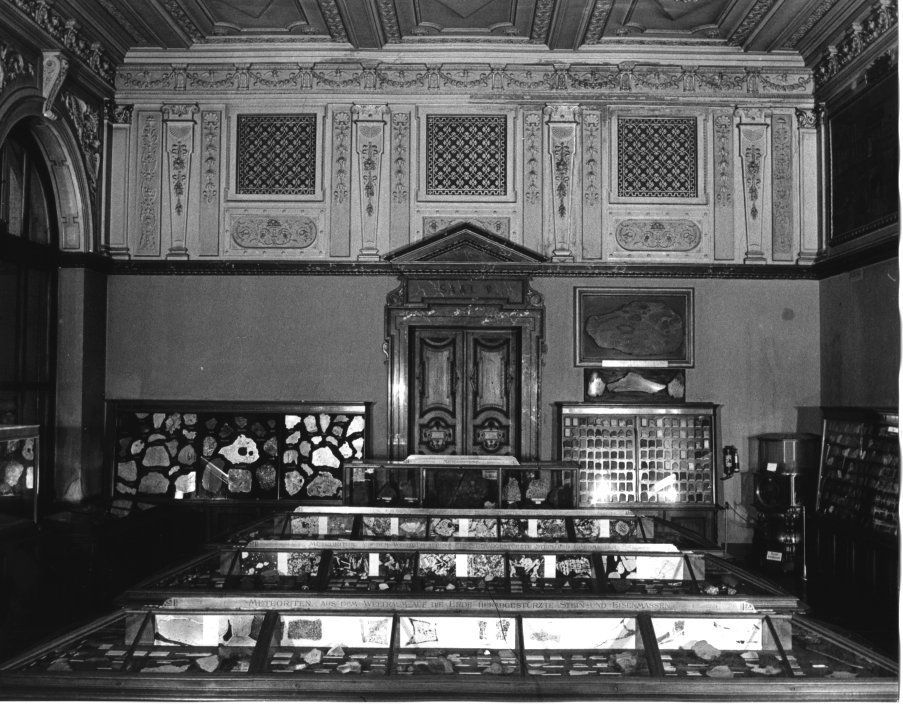

This Hall contains the largest meteorite show in the world. There are almost 1 000 different meteorites on display, many of which are old falls or finds. At the entrance to the Hall, there is a glass cabinet containing particularly large and special stone and stony iron meteorites. The stone meteorite Knyahinya (weighing approx. 300 kg), which was held for many years to be the largest ever found, is located in the middle of this cabinet. Beside it are pieces from Mocs, Lanzenkirchen, Tieschitz, LancÚ, Ybbsitz, Stannern, Estherville, and others.
Commencing left of the entrance in the wall cabinets, there is an introduction to the phenomena of meteorites: meteorite falls (V/1); classes of meteorites (V/2); chondrites (V/4); achondrites (V/5); stony irons (V/6); the texture of iron meteorites (V/7); the chemical classification of iron meteorites (V/8); the shapes of iron meteorites (V/10); the impact of extra-terrestrial bodies on the earth (V/11), and tektites (V/13 – 14). The wall cabinets V/18 – 20 and V/43 – 45 contain the terminological (phenomenological) meteorite collection put together by Aristide Brezina around 1890. The collection contains many detailed observations of meteorites and despite its age, it is a veritable mine of information for the more advanced meteorite expert.
The cabinets (V/52 – 115) contain a display of a systematic meteorite collection. It begins with the enstatite chondrites (EC), and moves through the ordinary chondrites (H-, L-, LL- chondrites), the carbonaceous chondrites, achondrites, mesosiderites, pallasites and finally, iron meteorites (sorted by textural classes from hexahedrites through octahedrites to ataxites and anomalous irons.
Large iron meteorites, including those from Cabin Creek and Hraschina, can be viewed in the cabinets V/116 – 121 and V/35 – 37.
The Mechanical Planetarium commissioned by Maria Theresia and constructed by Johann Georg Nesstfell during the years 1745 – 1757 is placed between cabinets V/2 and V/4.
On the long wall opposite the windows there are paintings which depict (from left to right) the fourth Hall of the old Mineral Collection (Eduard Ameseder); the meteorite fall at Knyahinya (Othmar Brioschi), and the first Hall of the old Mineral Collection (Fahrid Sabha, based on a water-colour painting by Eduard Ameseder).